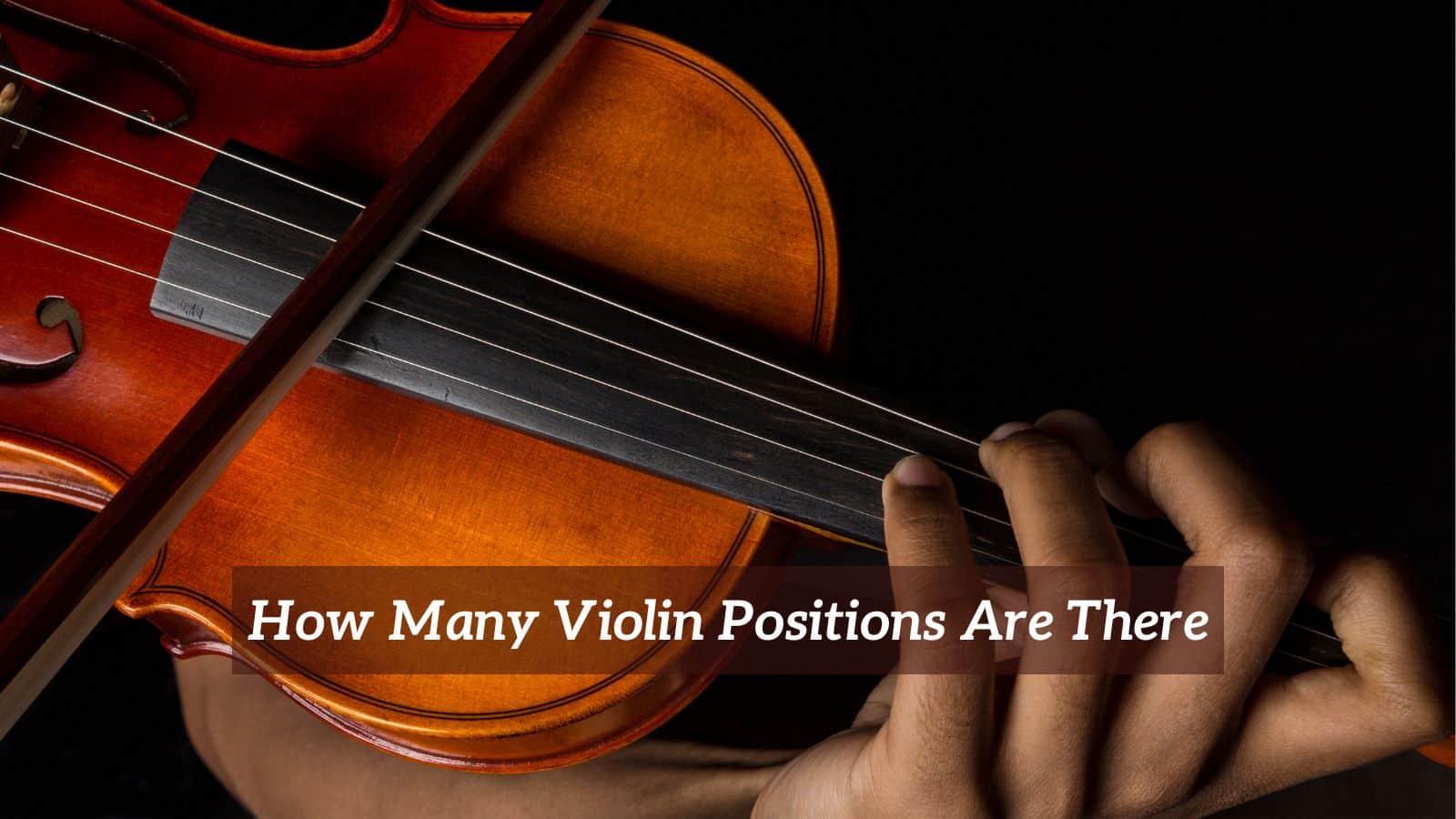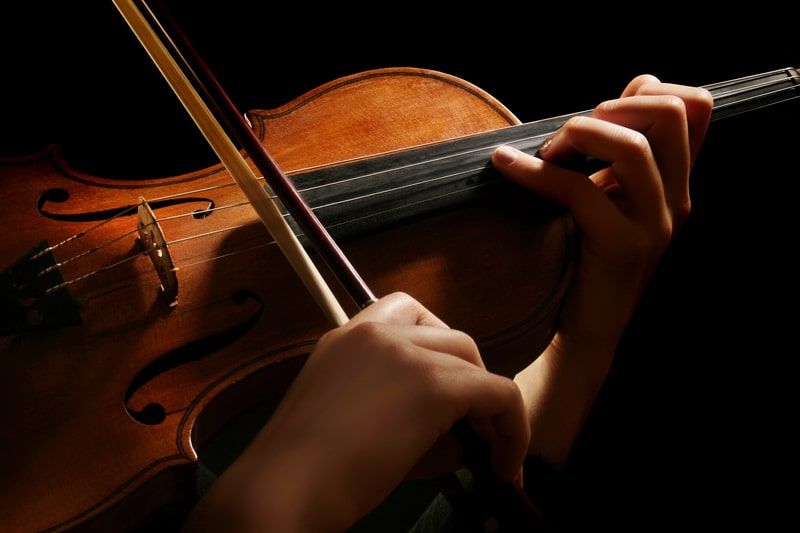
If you are just starting to learn the violin you may be wondering what are the violin positions, how many of them exist and what are they used for.
At first glance you may think that a “position” refers to the way the violin or the bow can be held, but do not be fooled by this tricky word – its meaning is related to the placement of the left fingers on the fingerboard only.
For a clear understanding of what a position is, you can imagine the fingerboard of the guitar. By looking closely at the neck of the instrument you can see many vertical metal bars called frets. Each fret marks the precise location of each musical note.
The first position, in this case, corresponds to the index finger being placed behind the first fret. By moving the hand forward a little bit, the index finger reaches the second position, near the second fret.
By moving a little forward, the index finger reaches the third position and so on. This pattern is what we call positions.
The positions of the violin
The violin has no frets but that does not mean that the positions can not be located on the fingerboard – violinists practice a lot so they can identify each note and position by ear.
There is, however, a small difference in how positions are classified in each instrument: while in the guitar the positions are measured by semitones (half-steps), the positions in the violin are classified by the notes of a scale.
To make it more clear let’s suppose an A major scale in the G string: in first position the first finger hits an A. When the hand moves to second position the first finger will hit a B. In third position the first finger will hit a C sharp and so on.
We can conclude that, depending on each scale, the exact location of each position may vary a little.
Why do violinists learn by positions
There is one important reason why most violinists learn to play by positions and the answer has to do with memorization. Suppose a beginner just started learning the instrument and has not yet learned the name of each note.
By doing repetitive exercises in first position, he will easily make a correspondence between each note and each finger. After the student feels more confident, he can proceed to learning the next positions. This method is very efficient and is found in most violin books.
How Many Violin Positions Are There?
There is a general concept of seven positions in the violin, but in reality we can not count how many of them exist in total. If we keep moving our first finger forward, we can always reach further positions.
There is however, a physical limitation due to the size of the human hand. If you imagine again the frets of a guitar, you can see that they are not equidistant, rather they follow a pattern and frets become closer to each other at each next position.
Because the violin is a small instrument, when placing the first finger past the sixth or seventh position, it is not physically possible to accomodate all fingers in a single position comfortably.
It does not mean that the positions do not exist, but each finger becomes responsible for reaching more notes at a time.
Another important reason why some violinists usually say that there exists only seven positions is the fact that there are only seven notes per scale, and the eighth position would be exactly like the first, just one octave higher.
The second position
It may come as a surprise to you, but the second position is one of the least used in the violin. Violinists often say it is a bit uncomfortable because it is harder to tune and because the first and fourth fingers may fall too wide apart from each other when open strings can not be used.
Indeed, the second position is a bit tricky: it is the only in which the hand does not have as many tactile references and the player may feel lost.
In first position the hand of the player can touch the base of the scroll, giving the violinist a reference for intonation. From third position and up there is always another reference which is the body of the violin.
Also, first and third positions cover all the notes existing in the second position, making the latter avoidable in most cases. There are instances, of course, in which second position will be used to facilitate agility, bow crossing, etc.
Half-position
The half-position got this name because it is placed behind the first position. It means that in some instances the first finger will not even be used as it corresponds to an open string.
It is almost never used but can be necessary in some cases, especially in some specific hard orchestral passages.
Pattern thinking
After learning all the existing positions, violinists tend to not think about their numbers, as knowing the name of each becomes automatic and all the patterns are naturally absorbed by the mind of the player.
There is even a school of thought that suggests that positions should never be thought one by one, in the traditional way, or not even numbered, because students tend to associate the higher numbers with higher levels of difficulty.
Advocates of this school say that even if the student does not know in which position he is playing, he is still capable of finding all the notes by memory and understand the patterns.
Conclusion
Although it is commonly thought that the violin has only seven positions, we can not establish a strict rule. Positions serve just as a guide, or a reference, but players do not need to depend on them to know where each note is located.
However, positions can be a useful tool to guide students throughout the instrument in a methodic way.
Also, many books that focuses on positions and also on shifting between positions are considered of great importance, as they can help each player to visualize the notes, gain confidence, and plan their studies in a systematic way.

